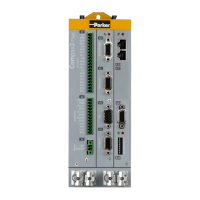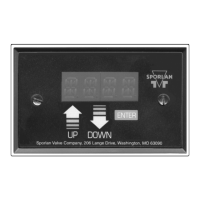Parker Hannifin
• Parameters
• Bits
• Aliases
An expression is comprised of at least one operand and one or more
operators. Operands are values, whether numerals or variables.
Operators are symbols that represent specific actions. For example,
the plus sign (+) represents addition, and the forward slash (/)
represents division. In the expression
A + 7
A and 7 are operands, and + is an operator.
NOTE: For a complete list of operators available, see the Expression
Reference section of the ACR Command Language
Reference.
Operations are performed in the following order:
• Powers
• Multiplication and division
• Addition and subtraction
• Relational operations (such as greater than, less than, not
equal to)
The hyperbolic (sine, cosine, tangent, etc.) and miscellaneous
operators (absolute value, natural log, square root, etc.) require
parentheses around their own expressions. The order of operations
with such operators begins with the deepest nested parentheses.
Parentheses
Using parentheses, you can group operations in an expression to
change the order in which they are performed.
Operational Order
For example, the expression
4 + 6 / 2
provides the answer 7, and not 5, because division performs before
addition. When a mathematical expression contains operators that
have the same rank, operations are performed left to right. For
example, in the expression
2 + 6 / 3 * 5 - 9
division and multiplication perform before addition and subtraction.
The first operation is 6 / 3; the second operation multiplies the result
2 by 5, which results as 10. In the third operation, add 2 to 10, which
results as 12. In the fourth operation, subtract 9 from 12 to produce
the final answer of 3.
28 Programmer’s Guide

